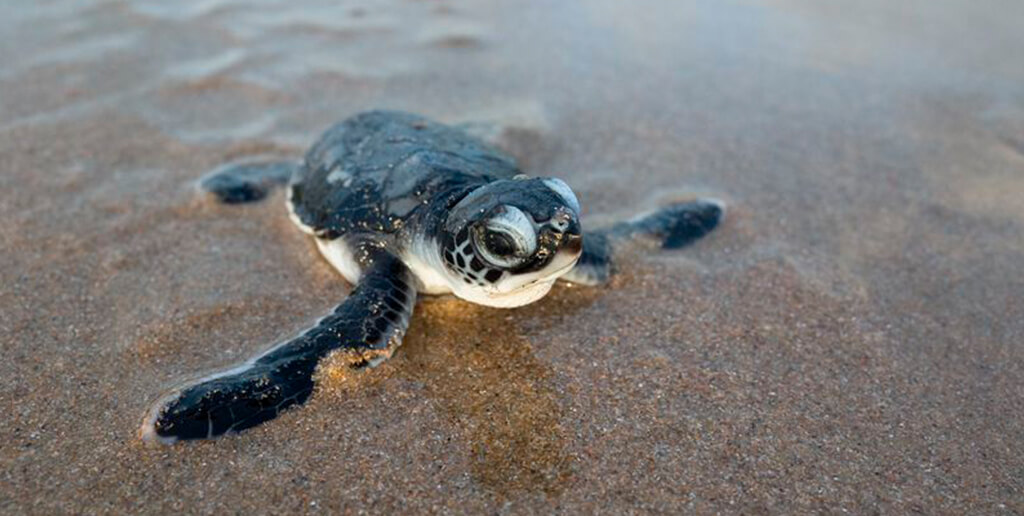
CANCUN EVENTS January 17, 2022
Marine Turtles nesting in Cancun
Mexico is the country of the sea turtles, the richness of our coastlines offers ideal conditions for food, rest and reproduction, from the seven species that currently exist in the world, six reproduced on the coasts of our country, both on the Pacific coast and the Caribbean, the only species of turtle that does not nest on Mexican beaches is the Flatback which does it in Australia.
Sea turtles spend almost all their life at sea, motion migration during different stages of their development, are known long migrations of hundreds or thousands of miles, are both females and males in the breeding season.
Well, June is the month when the first turtles have been sighted on the beach of Quintana Roo State, and the Solaris resorts are ready to receive these special guests so that they can lay their eggs in the warm sand.
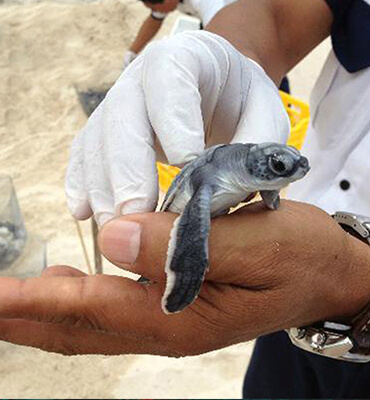
Solaris Resorts is committed to the preservation of all marine life, so in preparation for this our personnel is highly educated and trained by a professional marine biologist, the first wave of workers are the coastal guards and our very own animal rights staff.
Every night turtles come ashore to dig nests in the sand, and deposit their eggs, once the process is completed, they will bury them, and there is where the security team from Solaris comes in, to avoid predators, the nest is moved to a protected zone, near the hotel and with surveillance 24 /7.
We also have in place a protected nesting place, where its replicated the whole and marked with the Date and time, when it was found, to have proximity on when they are going to hatch, this is called the nursery to keep them away from its natural predators: seagulls, seabirds, foxes and crabs.
The eggs hatch between 45 - 60 days, and the miracle of life will happen, as you can be witness to hundreds of newborn turtles cracking open their temporary home.
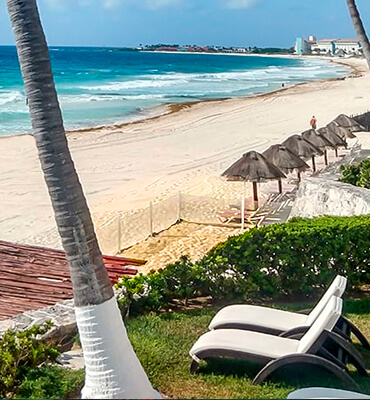
In Cancun, we are interested in the conservation of nature, and because of that, since 2000, there have been several programs conducted by the SEMARNAT (Environmental and Natural Resources department ) who operates the conservation of sea turtles through a turtle camps.
Because of that is not rare that in some walks to the beach you may find certain parts of your path blocked, which indicate that there is a nest of turtle, this is done to keep them away for later be taken by trained staff and be released in the months of August and September, it makes a genuinely incredible experience especially for children who enjoy seeing small turtles reach the sea to begin their life in their natural habitat; But even better, it can be the experience of finding with the spectacle of seeing how a turtle comes out of the sea to lay eggs on the beaches of our hotel, a truly unforgettable show, but it is advisable not to disturb them or approach much since that can cause the turtle to decide and return to the sea and spawn elsewhere.
Nesting turtles and their conservation has distinguished us as a country and as a municipality, so we invite you to that when visiting Cancun help us take care of them by following some simple advice:
- If you're on a night walk on the beach, be careful, and watch your step.
- Inform our security guard if you see one or several turtles in the sand.
- Keep your distance, don't rattle them, or they will interrupt their process.
- Don't flash them with a lantern or the phone flash.
- Please do not go near them to try and pet them.
- Follow trained personnel instructions and lay a hand when needed.
Types of turtles, the first 4 are the ones that come to nest in the Caribbean.
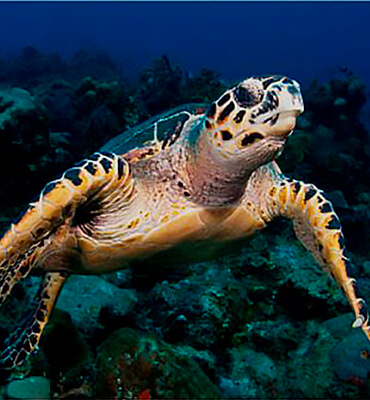
Green Turtles ( Chelonia mydas ), weight up to 400 pounds and can spawn 100 eggs with the shape of ping pong balls; their diet is strictly vegetarian.
Hawksbill (Eretmochelys imbricata) turtles, at only 170 pounds, it's one of the smallest turtles, with two distinctive characteristics, the shell is like a heart, and they have a beak, like a bird ( even tho it's not sharp) they eat Jellyfish, mollusks, and Crustaceous.
Loggerhead (Caretta caretta), turtles has a large head and weights up to 250 pounds, they reach adulthood until 33 and can lay up to 110 eggs ping pong shape.
Leatherback (Dermochelys Coriacea) the Big ones, can be up to 2000 pounds, and they lay up to 90 eggs the size of a tennis ball, they travel the world and only eat Jellyfish, that's the importance of keeping clean the ocean, as these turtles sometimes mistake plastic bags as food, and choke.
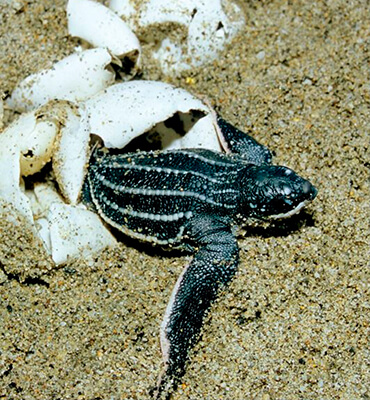
Kemp Ridley (Lepidochelys kempii ), turtle, with a weight of 120 pounds, eat the same as the green turtles, they nest 110 eggs on a clutch, only in Tamaulipas state, and SPI.
Olive ridley (Lepidochelys olivacea) turtle, at 100 pounds is the smallest in the list, they live in the Pacific, and nest in Cabos, laying up to 100 eggs, they have a balanced diet, eating crustaceans, Jellyfish or even algae.
Flatback (Chelonia Depressa), weighing 200 pounds, this is the only species that doesn't travel to Mexico, as it prefers the coastal shores of Australia, laying only 50 eggs per nest. They are very wide on they're eating procedures, they can eat soft shell crustaceous like shrimp, or coral, and sea cucumber.
Other General recommendations to help preserve these marine creatures are :
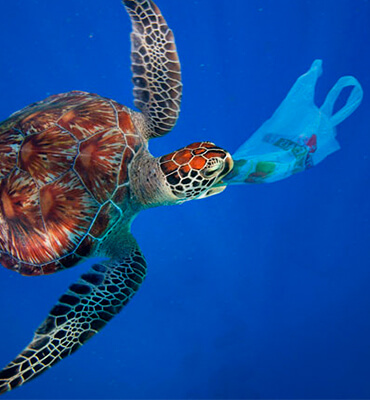
Help keep clean the beach and the water, lets always pick up trash left like plastic, fishing lines and other toxic materials that they might try to feed on.
Always use Biodegradable sunblock, regular one pollutes the water that is their natural environment.
If you're still at sea swimming and sea turtles, don't approach them, or they will turn back without laying one egg.
Turtles are an endangered species, and by Mexican law, whoever is caught hunting them, or eating the meat or eggs, is going to spend some jail time.
You could be an official Solaris Turtle program volunteer, we always look forward a helping pair of eyes to spot new nests, and of course release the turtles to the sea between August and September.
FAQs
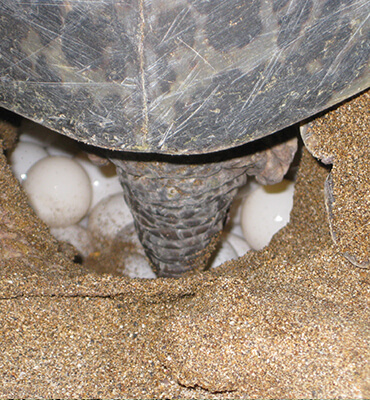
The Gender of a turtle depends on the sand temperature, 29.6 Degrees Celsius, will have a 50/50 ratio, higher than that will hatch only females, cooler than that will have only males born.
Grown turtles return to the place they were born to lay their eggs, even if its been several years since they started their journey at sea.
Loggerhead turtles nest on average 2 - 5 times per year, the Green ones also follow this same tendency.
Leatherback turtles nest between 7-10 times, with the difference they nest every three years.
We invite you to learn more about the turtles, they're habits, and why this species is essential for the ecosystem.
Hopefully when you travel you can either help out spotting and protecting them, or even releasing them into the sea once again.
Solaris Will always be committed to the environment and the preservation of it, taking care of every single detail in the construction and placement of any of the structures in the sand, can't wait to see you again.
PREVIOUS POST NEXT POST